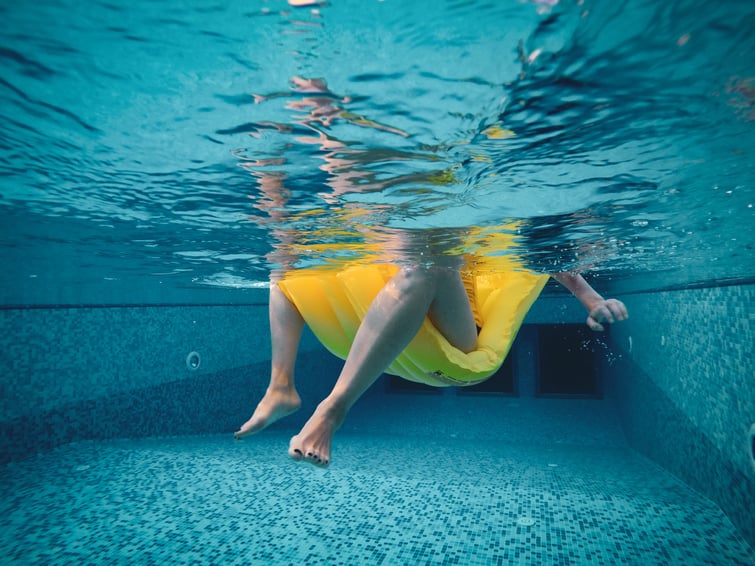
Throughout the world, swimming pools and hot tubs have become a trendy source of relaxation and enjoyment. The US alone is estimated to have around 10.4 million privately owned pools1,7.3 million hot tubs2 and 309,00 public swimming facilities1. And the UK, which ranks within the top ten in the world’s hot tub market, has an estimated 100,000 hot tubs3, 3,158 swimming pool sites2 and 210,000 private swimming pools4. Unfortunately, these popular water systems present a serious risk to public health from various water-borne illnesses.
Pools, whirlpools and hot tubs, are well-known sources of Legionnaires’ disease. Swimmers are at risk for respiratory infections if they breathe in contaminated water droplets or mist from a pool or hot tub. Legionella is one of the most frequent waterborne diseases (from drinking water and recreational water) among humans in the United States5 and outbreaks of Legionnaires’ disease, a potentially fatal pneumonia-like illness, have been linked to spa pools in leisure centres, hotels, holiday homes and cruise ships amongst others.
Pool and spa systems are high-risk for the growth and spread of Legionella for a number of reasons; the first being their temperature. This is especially true for hot tubs, which are kept between 37-40-degrees C, providing Legionella with ideal conditions for growth. Aerosol generation is another problem as hot tubs can disperse contaminated water droplets over considerable distances. A study on outbreaks of Legionnaires’ disease caused by long‐distance spread suggests that in some cases Legionella can travel as far as 10 km6. As a result, you don’t even have to be sitting in the hot tub to inhale the bacteria, you can simply be in its proximity.
The risk is increased further by large surface areas caused by a complex system design of filters, pumps and pipes, and the introduction of nutrients – such as mucus, saliva, perspiration, dead skin, suntan lotion, spray tans, cosmetics, shampoo, soap residues, faecal matter, and hair7. Both of these factors can encourage a build-up of biofilm which provides Legionella with nutrients and protection from disinfectants.
As we enter a warmer period over Spring and Summer, health and safety professionals and private owners of pools and hot tubs should ensure that their systems are frequently tested and properly maintained. Regular testing of TDS, disinfectant, chlorine, pH, ACC, coliforms, E coli, P aeruginosa and Legionella must be carried out and proper records must be kept, to reduce risk to public health. Legionella pneumophila can proliferate very rapidly, especially under agreeable temperatures - potentially doubling in population within a mere 24 hours8. However, traditional methods for Legionella can take 7-14 days to return results. Slow time to result leaves vulnerable persons at risk and can lead to shutdowns, heavy fines and reputational damage for businesses.
Back in 2016, a popular hotel chain run by BDL Select Operations Ltd was fined £54,000 following an outbreak which sickened 65 people. Reports found that management had failed to carry out necessary safety checks and did not adequately drain or clean a hot tub system on the premises. This negligence allowed Legionella to spread to other areas of the system and eventually contaminated the hotel’s showers and pool9.
Rapid testing technologies like Hydrosense can help duty managers to minimise risk and avoid these outcomes. Hydrosense can provide duty holders with quick and accurate results for the most dangerous strain of Legionella – L. pneumophila SG1 – which is responsible for almost all cases of Legionnaires’ disease. Results can be obtained onsite in minutes, by anyone with little to no training. This simple test can protect against many of the limitations of the Lab Culture method, helping to protect public health and avoid other negative consequences of an outbreak such as huge fines and bad press.
References:
- MarketResearch.com. (2019). Available at: http://bit.ly/2m1XpKs [Accessed 23 Apr. 2019].
- Hallett Taylor, L. (2019). The Spruce. Available at: http://bit.ly/2kskFkG [Accessed 23 Apr. 2019].
- BISHTA (2015). Available at: http://bit.ly/2kGFngS [Accessed 23 Apr. 2019].
- COATES, C. (2009). Mail Online. Available at: https://dailym.ai/2lVN9na [Accessed 23 Apr. 2019].
- Cdc.gov. (2016). Available at: http://bit.ly/2kPWT20 [Accessed 23 Apr. 2019].
- Karin Nygård, Øyvind Werner-Johansen, Svein Rønsen, Dominique A. Caugant, Øystein Simonsen, Anita Kanestrøm, Eirik Ask, Jetmund Ringstad, Rune Ødegård, Tore Jensen, Truls Krogh, E. Arne Høiby, Eivind Ragnhildstveit, Ingeborg S. Aaberge, Preben Aavitsland (2008). Available at http://bit.ly/2kQFxSM [Accessed 03 Oct 2018]
- Megji S. (2017). Available at: http://bit.ly/2m03ass [Accessed 04 Oct 2018]
- Muder, R. and Yu, V. (2002). Available at: http://bit.ly/2kGwUKE [Accessed 6 May 2018]
- BRENNAN, J. (2016). Available at: http://bit.ly/2lUbPwu [Accessed 23 Apr. 2019].

